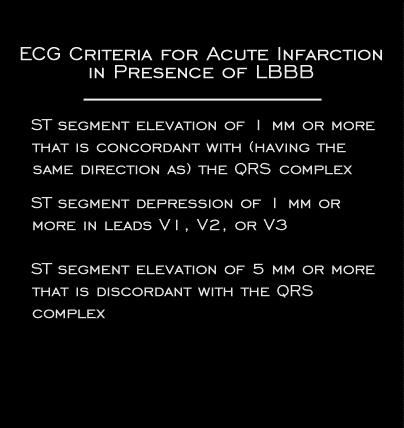
Analysis of electrocardiograms from patients enrolled in large multicenter trials of thrombolytic agents led to the development of the electrocardiographic criteria for the diagnosis of acute ischemia/infarction in patients with left bundle branch block but without a prior electrocardiogram (Sgarbossa et al. NEJM 1996;33:481-487). These criteria are shown here. In considering these criteria, remember that in left bundle branch block, the ST segment and T waves are usually directed opposite to the QRS complex, i.e. are discordant to the QRS complex. Also be aware that the ST segment values shown are taken from ECGs recorded at the usual calibration of 1 mv = 10 mm (or 1 mm = 0.1 mv). Therefore, the values for ST segment depression and elevation (1 mm and 5 mm) might also include 0.1 mv and 0.5 mv.
